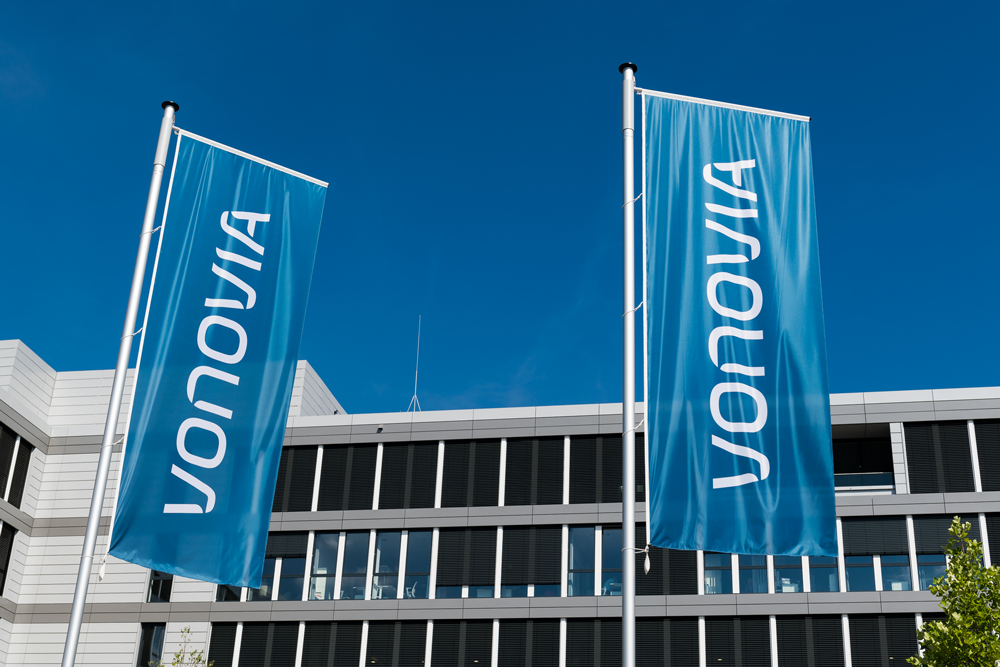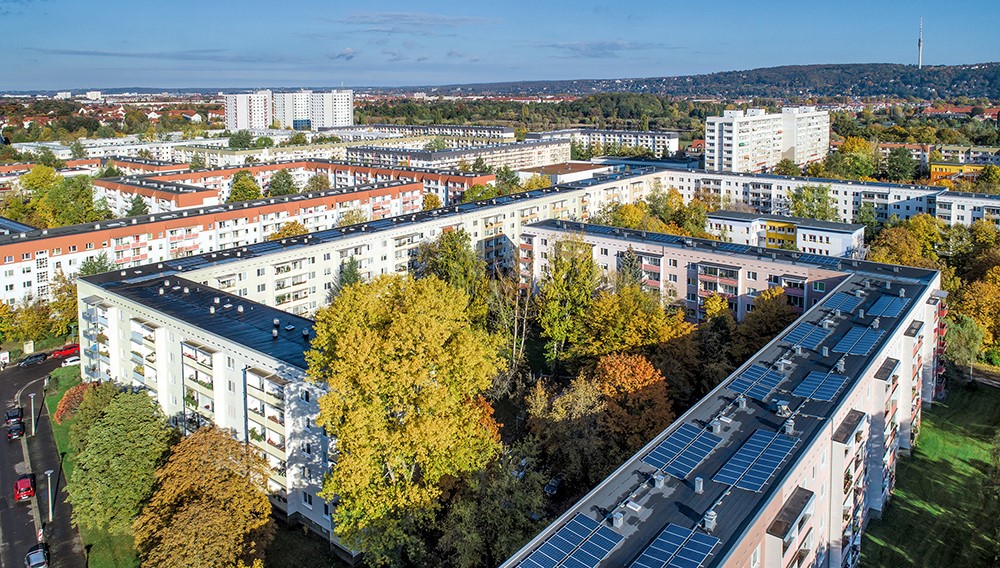Scaling of Innovations
Vonovia can look back on various projects that were implemented successfully in 2021 and progressed from an initial idea to a scalable innovation. This has allowed new business models and services to be established.
A Strict Innovation Process
The mounting of photovoltaic modules on the thousandth roof laid the foundation for sustainability and the commercial use of renewable energies. The focus now is on scaling the installation of photovoltaic systems to supply entire neighborhoods with sustainable energy. The installation capacities will be increased ten-fold in the medium term, with photovoltaic systems with an output of more than 200 MWp being installed on roofs between now and 2030. Up to 100 employees will be hired in the future to work in planning and installation in order to complete this project. Roof inspections are also to be made more efficient using drones to generate digital 3D roof models. What is more, preassembled sub-systems will be used in the future so that photovoltaic modules can be mounted to large roof areas as part of an automated process. In 2021, the installation of all photovoltaic systems was switched over to landlord-to-tenant electricity in order to allow tenants to participate in local electricity generation in the neighborhood by offering direct green electricity, and to allow Vonovia to offer an affordable green electricity product.
As part of the EU Interreg project “Mustbeo” for North-West Europe, the very first energy-efficient refurbishment project based on the Energiesprong principle is being implemented in Bochum. This innovative building upgrade solution is defined as a key component of the climate path as we move towards a portfolio that is as close to carbon-neutral as possible. The project comprises three residential buildings with 24 apartments and 1,164 m² of living area. The method uses serial refurbishment to achieve the quick and effective retrofitting of the buildings, which are climate-neutral after refurbishment (net zero standard). The building data is recorded using 3D scans and insulating facade elements are prefabricated to fit to the millimeter and only have to be assembled on the construction site. Suitable photovoltaic modules are also installed and the heating system is upgraded, including the switch to efficient heat pumps. The focus is also on innovative procurement and recycling processes in line with the sustainability strategy. The technologies already in use are also reviewed on an ongoing basis to identify potential for process optimization. The aim is to ensure a high level of living comfort by keeping refurbishment times to a minimum.
More and more digital technologies are making their way into Vonovia’s buildings. Almost all elevators already send information on their operating status to the technical control center in real time. The information on the elevator systems is consolidated and displayed on a digital platform and provides an overview of statistics, reports and operating data. The use of Internet of Things (IoT) technologies, which facilitate data-led decisions and help to analyze the technical condition effectively from any location, play a key role in this process. Another technology involves the remote monitoring of central heating systems in existing buildings, which will be rolled out as standard in 2022. This allows CO₂ emissions from buildings to be reduced through optimized control, while also establishing a significantly improved reporting chain allowing any faults to be resolved more quickly than in the past.



